This image may look spooky to you, but astronomers see a galaxy. It was captured by the Very Large Array (VLA) as part of the Local Group L-Band Survey (LGLBS) and is an atomic gas emission image of the nearby galaxy IC 1613.

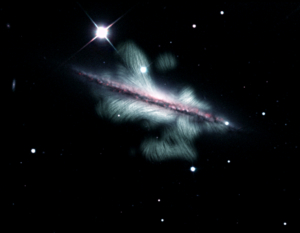
Magnetic Field of a Spiral Galaxy
An image from the VLA dramatically reveals the huge extent of the magnetic field of a spiral galaxy seen edge-on from Earth.
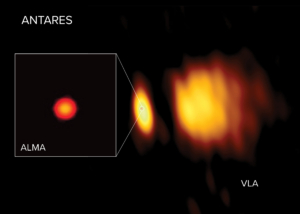
Radio images of Antares
Radio images of Antares with ALMA and the VLA. ALMA observed Antares close to its surface in shorter wavelengths, and the longer wavelengths observed by the VLA revealed the star’s atmosphere further out. In the VLA image a huge wind is visible on the right, ejected from Antares and lit up by its smaller but hotter companion star Antares B.
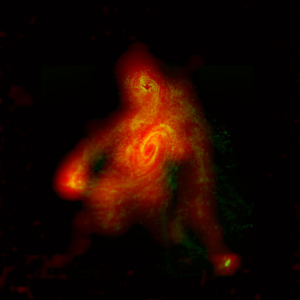
M81 in Radio
The spiral galaxy M81 and its satellite, M82 as seen by the Very Large Array.
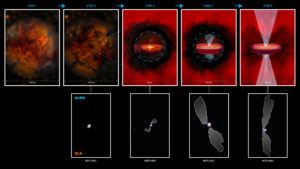
The formation of protostars
This schematic shows a proposed pathway (top row) for the formation of protostars, based on four very young protostars (bottom row) observed by VLA (orange) and ALMA (blue). Step 1 represents the collapsing fragment of gas and dust. In step 2, an opaque region starts to form in the cloud. In step 3, a hydrostatic core starts to form due to an increase in pressure and temperature, surrounded by a disk-like structure and the beginning of an outflow. Step 4 depicts the formation of a class 0 protostar inside the opaque region, that may have a rotationally supported disk and more well-defined outflows. Step 5 is a typical class 0 protostar with outflows that have broken through the envelope (making it optically visible), an actively accreting, rotationally supported disk. In the bottom row, white contours are the protostar outflows as seen with ALMA.
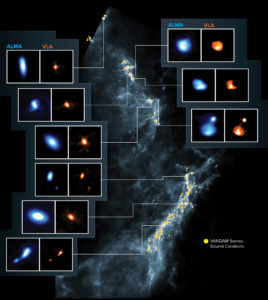
Protostars in Orion Molecular Clouds
This image shows the Orion Molecular Clouds, the target of the VANDAM survey. Yellow dots are the locations of the observed protostars on a blue background image made by Herschel. Side panels show nine young protostars imaged by ALMA (blue) and the VLA (orange).





